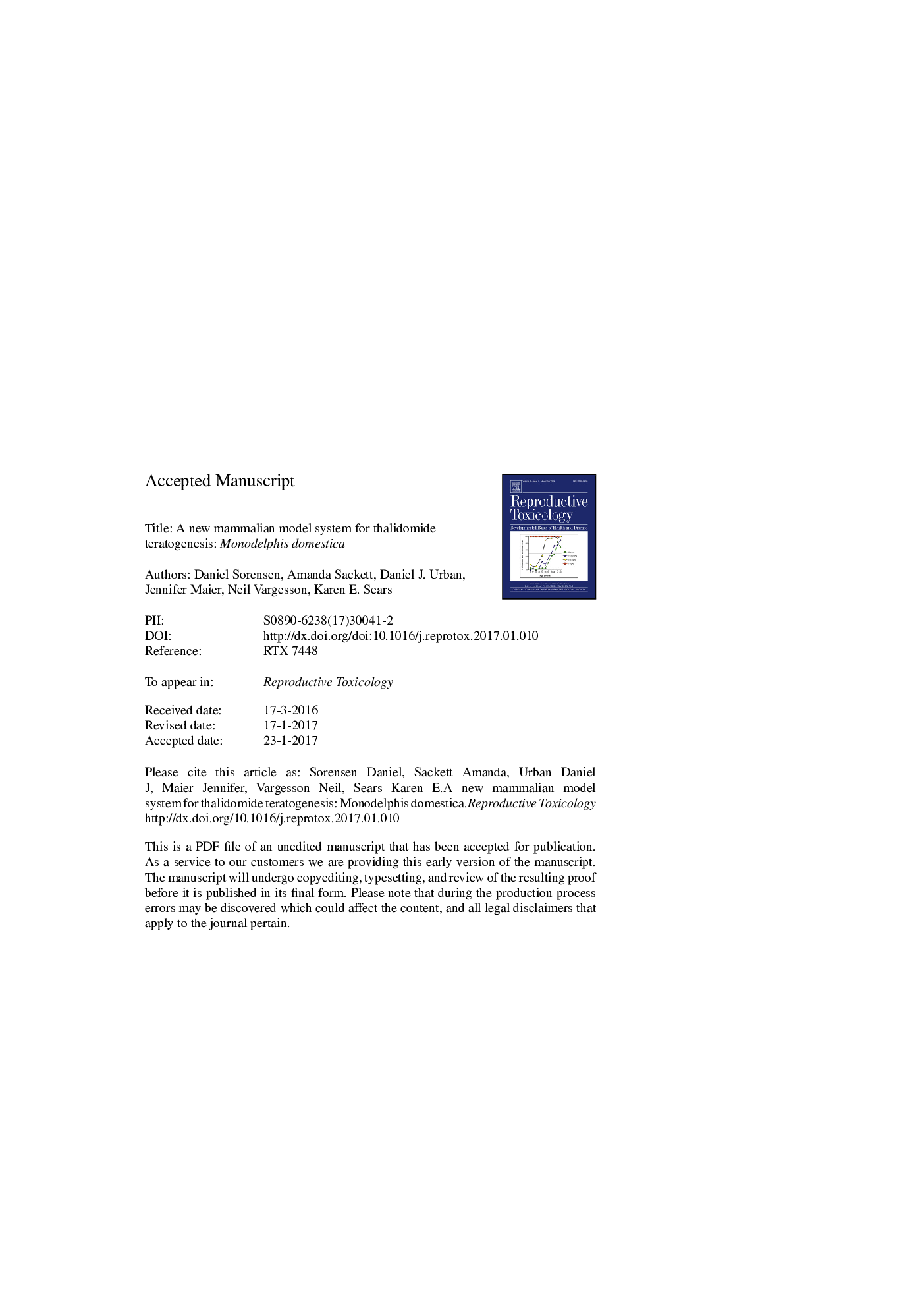| کد مقاله | کد نشریه | سال انتشار | مقاله انگلیسی | نسخه تمام متن |
|---|---|---|---|---|
| 5561422 | 1562149 | 2017 | 25 صفحه PDF | دانلود رایگان |
عنوان انگلیسی مقاله ISI
A new mammalian model system for thalidomide teratogenesis: Monodelphis domestica
دانلود مقاله + سفارش ترجمه
دانلود مقاله ISI انگلیسی
رایگان برای ایرانیان
کلمات کلیدی
موضوعات مرتبط
علوم زیستی و بیوفناوری
علوم محیط زیست
بهداشت، سم شناسی و جهش زایی
پیش نمایش صفحه اول مقاله

چکیده انگلیسی
From 1957 to 1962, thalidomide caused birth defects in >10,000 children. While the drug was pulled from the market, thalidomide is currently prescribed to treat conditions including leprosy. As a result, a new generation of babies with thalidomide defects is being born in the developing world. This represents a serious problem, as the mechanisms by which thalidomide disrupts development remain unresolved. This lack of resolution is due, in part, to the absence of an appropriate mammalian model for thalidomide teratogenesis. We test the hypothesis that opossum (Monodelphis domestica) is well suited to model human thalidomide defects. Results suggest that opossum embryos exposed to thalidomide display a range of phenotypes (e.g., heart, craniofacial, limb defects) and penetrance similar to humans. Furthermore, all opossums with thalidomide defects exhibit vascular disruptions. Results therefore support the hypotheses that opossums make a good mammalian model for thalidomide teratogenesis, and that thalidomide can severely disrupt angiogenesis in mammals.
ناشر
Database: Elsevier - ScienceDirect (ساینس دایرکت)
Journal: Reproductive Toxicology - Volume 70, June 2017, Pages 126-132
Journal: Reproductive Toxicology - Volume 70, June 2017, Pages 126-132
نویسندگان
Daniel Sorensen, Amanda Sackett, Daniel J. Urban, Jennifer Maier, Neil Vargesson, Karen E. Sears,